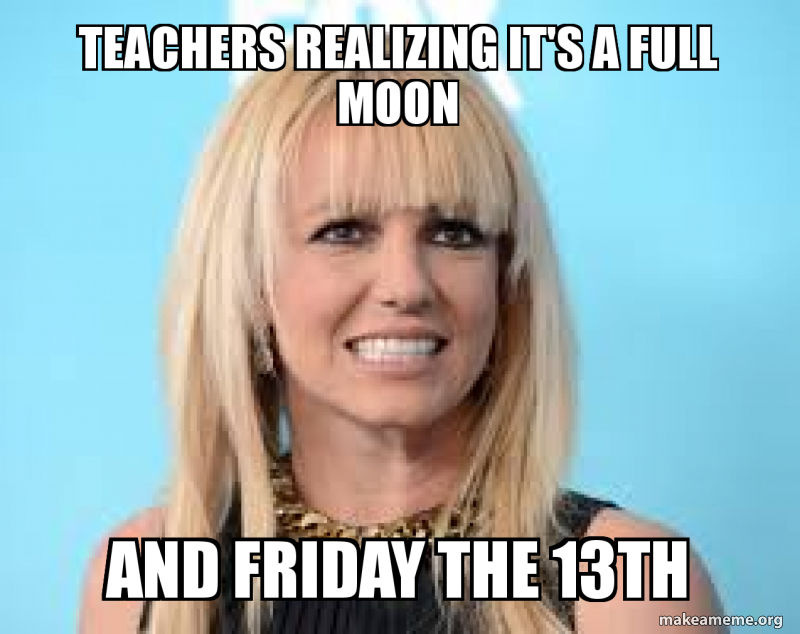
I am now finishing my third full year as an Assistant Principal in the fifth largest high school (3,000 students in grades 9-12) in Palm Beach County, Florida. To say that the past several weeks have been unexpected would be an understatement. I joined the team at Palm Beach Central High School in May 2017, so while I’m finishing my third full year, this graduating class is the first group of students who have known me for all four years of high school. I was just beginning to gear up to plan my fourth Bronco graduation ceremony; a highly anticipated event that has now been canceled (or at least postponed).
The week of March 9th, now seems like a distant memory, a time when COVID-19 seemed like a far-off threat and local impacts were unlikely. Then, on March 11th, at the direction of our school district, we held an emergency faculty meeting to discuss increased cleaning protocols and to collect questions from concerned staff members…about the Coronavirus. This was the first sign that our school district was preparing for the worst. When we received word on Friday, March 13, that schools would be closed the following week, honestly, I was slightly relieved; I was in dire need of a break and was really looking forward to my Spring Break trip to London that was 7 days away. As we sat in the Principal’s Conference Room and watched the superintendent of schools present the details of the closure, I, in my typical fashion, I masked anxiety with humor. The trip to London never came.
Given what we now know about the spread of the Coronavirus, and what has been learned from previous, less pervasive pandemics, school closures have proven to be a key component in the battle against virus spread. Cauchemez et al. (2009) refers to school closure as a highly effective non-pharmaceutical intervention for controlling viral pandemics. The general science behind this concept is that children are thought to be “vectors of transmission,” and the high rates of contacts that occur in schools can increase transmission. What we now know about Coronavirus suggests that not only are young people “vectors of transmission,” but they are also often asymptomatic, unintentionally spreading the virus to others (US Department, 2020, p. 425).
Less than a week after closing schools for two weeks, Florida’s governor announced that the closure would be extended an additional two weeks, through April 14th, and that’s the moment that a professional shift occurred – we were no longer on an extended spring break – this was a crisis impacting 3000 students, 200+ staff members, and countless other stakeholders. Leadership was needed.
This was something that had never been planned for, but the best minds in our School District had been working overtime coming up with a framework for schooling to move forward through Remote Learning. A Framework. Not necessarily a plan. But it gave us something to work with.
Our framework for Remote Learning involved a few phases:
- Determine the need
- Our school district pushed out a home technology survey to determine the needs of our community.
- Device Distribution to students & Staff
- For five days (over 11 hours) we provided opportunities for those in need of technology to pick up a device in a drive-through setting.
- Formulate and effectively communicate an instructional continuity plan for our school
- Given the fluidity of the situation, we worked slowly, yet deliberately to create a plan that considered the needs of both students and staff members.
- Teachers establish an online presence
- Google Classroom is our district-wide eLearning platform. As a school, with input from our “Teaching with Technology Trailblazers” who already used Google Classroom, we determined that every teacher would create a Google Classroom for each section/period that they teach.
- Teachers “Go Live” on Tuesday, March 31, 2020
- Teachers used a combination of Live lessons via Google Meet, Google Classroom for assignments, and various 3rd party supplemental instructional such tools as NearPod, IXL, and ReadingPlus.
- Systems, Systems, Systems
- The need for systems in a time when we’re all doing a job that is both familiar yet foreign, created a need for systems to address the constantly changing needs of our situation.
In a time when what is happening in the world around us so so far our of our control, I found a great deal of peace, and eventually pride, in working with a team of administrators that would create a plan for 3000 students and 200+ staff to successfully reconnect and reengage in education. This is unlike anything most educators have experienced before, but I believe it says a great deal about our profession, and our value to society, that even in the face of crisis, we persist.
References
Cauchemez, S., Ferguson, N. M., Wachtel, C., Tegnell, A., Saour, G., Duncan, B., & Nicoll, A. (2009). Closure of schools during an influenza pandemic. The Lancet infectious diseases, 9(8), 473-481.
US Department of Health and Human Services/Centers for Disease Control and Prevention. (2020, April). Coronavirus Disease 2019 in Children — United States, February 12–April 2, 2020 (Report No. Vol. 69 No. 14) (S. Bialek, R. Gierke, M. Hughes, L. A. McNamara, T. Pilishvili, & T. Skoff, Authors). Morbidity and Mortality Weekly Report.


